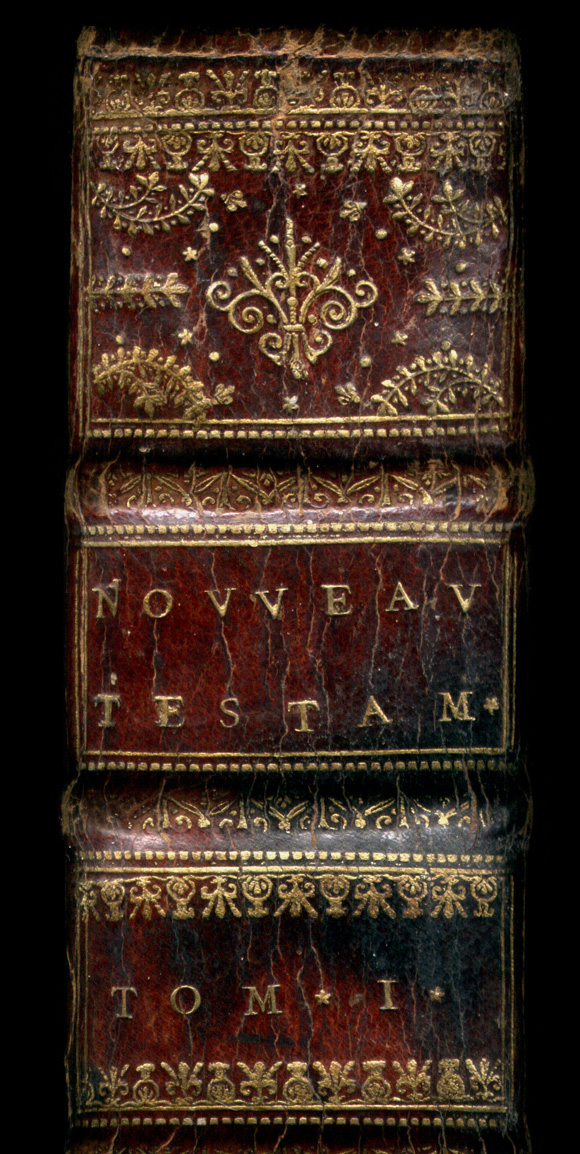

| On the previous page we examined many of the important gold tooled imprints found on the spine of this supposed 1693 Boyet binding, we are now going to look at the some of the remaining, important details, starting with the decorative endpapers*. |
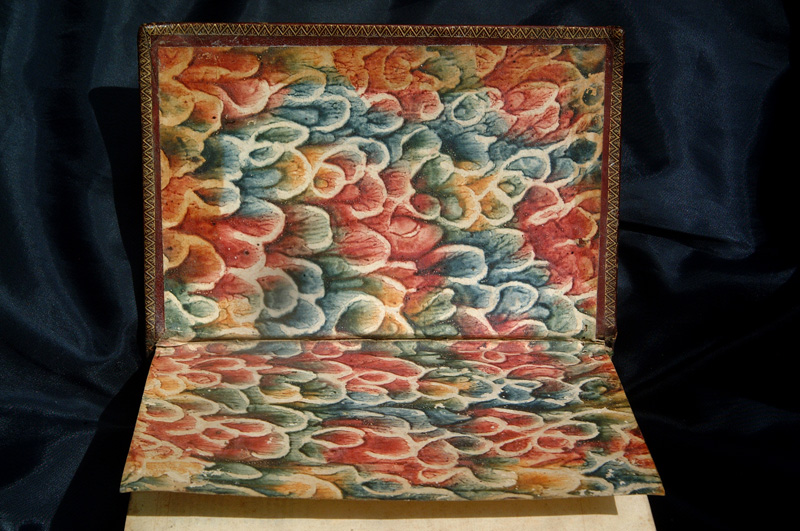
|
We find on the inner side of the boards, a rather specialized decorative paper, this is not marbled paper, and a search of the internet for similar examples brought me to the web pages of the University of Washington Libraries. In their Digital Collections under, PASTE PAPER PATTERNS, you find a wide range of antique decorative paper samples. I quickly found something of a similar nature called "Pulled" paste paper. |
|
Pulled paste Loring: pulled paste This paste paper is most likely created by covering a piece of paper with a colored paste. Then another piece of paper would be laid down on top of it and they would be pressed together. As the papers are being pulled apart from one another branching veins appear, characteristic of this type of paste paper. (Decorated Book Papers by Rosamond Loring, pgs 66-67). |
| The paper used in this 1693 binding seemed somewhat more complex than pulled paste paper, and after exploring some of the links on the UWL site, eventually I found an example that was a somewhat closer match. I have reproduced this paper below, it combines the pulling process and the daubing technique. |
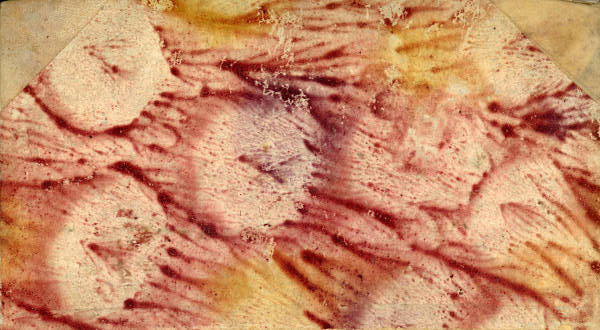
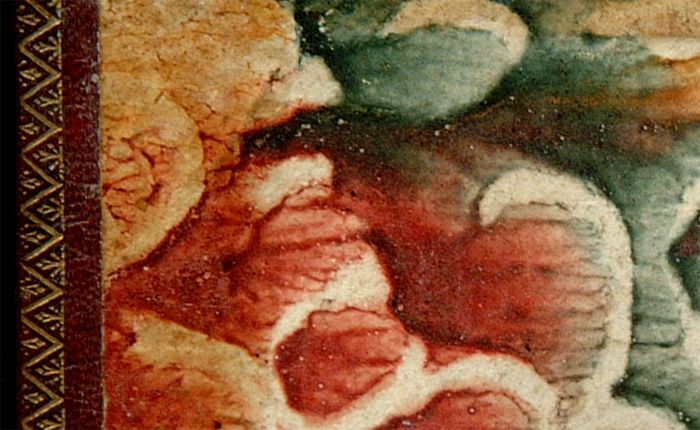
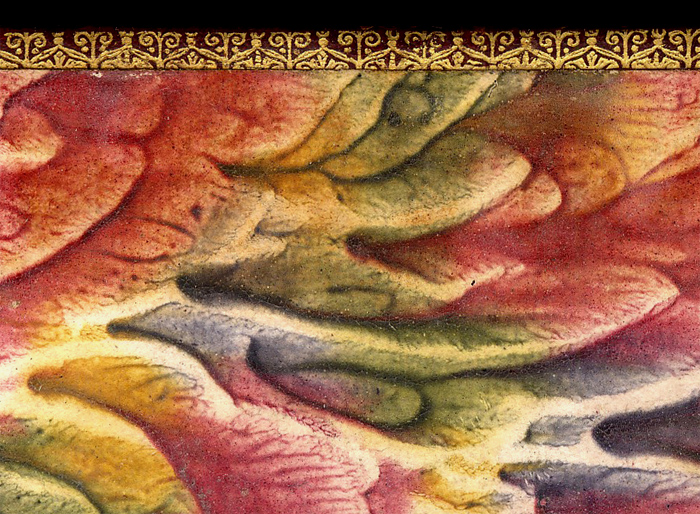
|
By a rather fortunate coincidence, another binding that I bought just recently, a 1688 Breviarium Romanum, that also appears to be decorated with Boyet tools, shares a very similar decorative paper. Identical in fact, in terms of the abstract effects achieved. Information about this kind paper is not easy to find, and the UWL samples are not from France but from Germany. In a paper entitled THE OLGA HIRSCH COLLECTION OF DECORATED PAPERS, by Mirjam M. Foot, there is a reference to the famous German decorated-paper merchant and paper-embosser, Georg Christoph Stoy of Augsburg, who married, in 1703, Anna Barbara Enderlin, the sister of Jakob Enderlin and the widow of the painter and paper-marbler Mathias Frohlich. Stoy took over Frohlich's decorated-paper business as well as his imperial 'Privilegium impressorum' for leather and metallic papers, which was renewed for him in 1709. |
| "Stoy's range of work can be judged from his two sample cards now in the Staatliche Kunstbibliothek in Berlin and illustrated by Haemmerle." |
| this reference is to the 1961 Munich publication, Buntpapier. Herkommen - Geschichte Techniken - Beziehungen zur Kunst. by Albert Haemmerle. In this book, the author outlines the history of decorated and marbled paper, there are 155 illustrations and eighteen actual paper specimens tipped-in, as well as a thirteen page bibliography of the subject done in triple column, not to mention, the description of 664 examples of decorated paper. This definitive work on decorative papers, does not come cheap, you are looking at a minimum of 200, to over 500 USD for a second hand copy, however my interest in brokatpapier,(another form of decorative paper used in the 18th century by French bookbinders) last year, finally pushed me into buying a copy. I have reproduced the Stoy sample cards below (click on the cards to see enlargements), even though these samples are low res and in black and white, I think we can in any case still see examples that resemble pulled paste papers. |
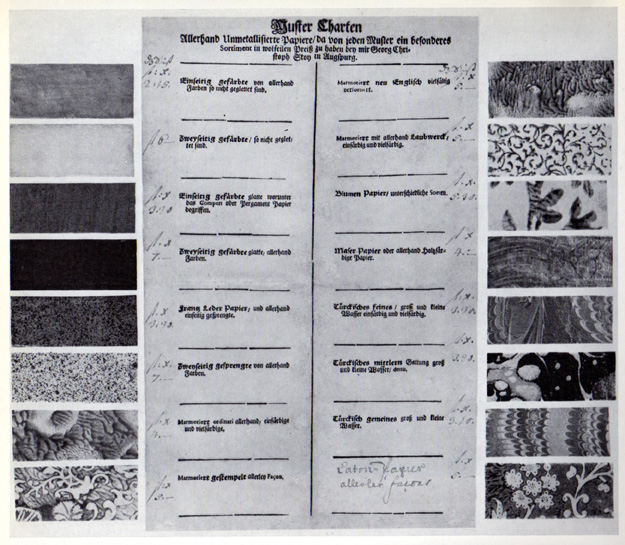

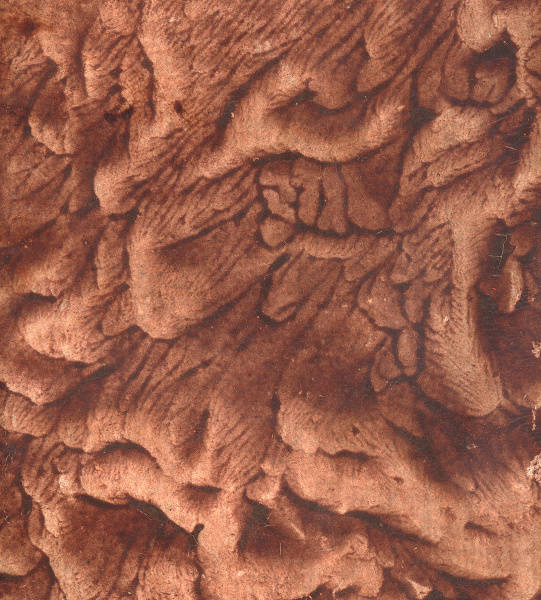
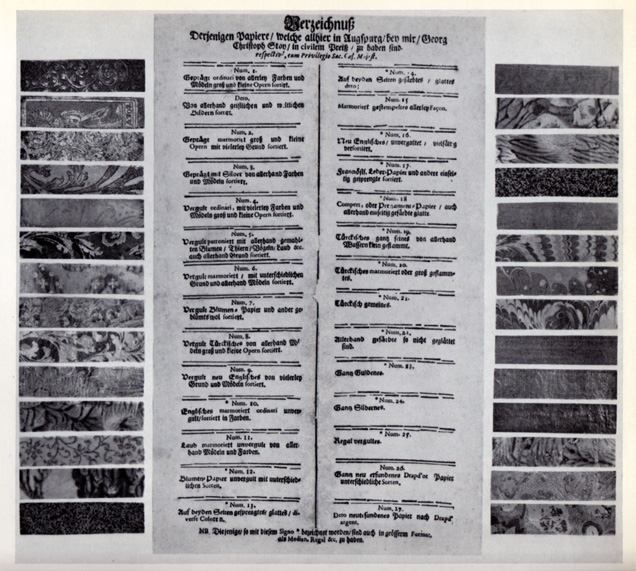
| From these sample cards we see that Germany was certainly producing a wide range of decorative papers, by the year 1730. What does not seem clear is where and when pulled paste paper was invented. Are the examples in Boyet's bindings of Germen manufacture? are they early or even perhaps some of the first known examples? Further research is needed to discover the source of this unusual abstract decorative paper that appears to be centuries ahead of its time. |
|
Return to the previous page Luc-Antoine Boyet- Tool Identification. |
|
Definitions from: ODLIS - Online Dictionary for Library and Information Science * endpaper In bookbinding, a sheet of thick, strong paper folded down the center, one-half of which is pasted to the inside of the front or back board, the other half forming the first or last leaf (the flyleaf or free endpaper), to protect the text from the boards and counteract the pull of the cover on the boards. The fold in each endpaper functions as a hinge, joining the text block to the cover and allowing the attached board to swing open and closed (see this diagram). For extra strength, some books have double endpapers. In early printed books, binding waste was sometimes used for endpapers, as in this example (Princeton University Library). From the 17th century on, decorated endpapers were used in hand-binding. Click here and here to see marbled endpapers in early editions. Click here to see decorated endpapers in a 17th-century volume dedicated to Frederik III of Denmark (Royal Library of Denmark). In modern book production, the color of the endpapers often complements the material covering the boards. Maps, genealogies, tables, or illustrations are sometimes printed on the endpapers, especially in biographies and historical works (see this example). Also spelled end-paper. Synonymous with endleaf and endsheet. Compare with doublure. |
| Go to Digital Alchemy | return to the home page of cyclopaedia.org |